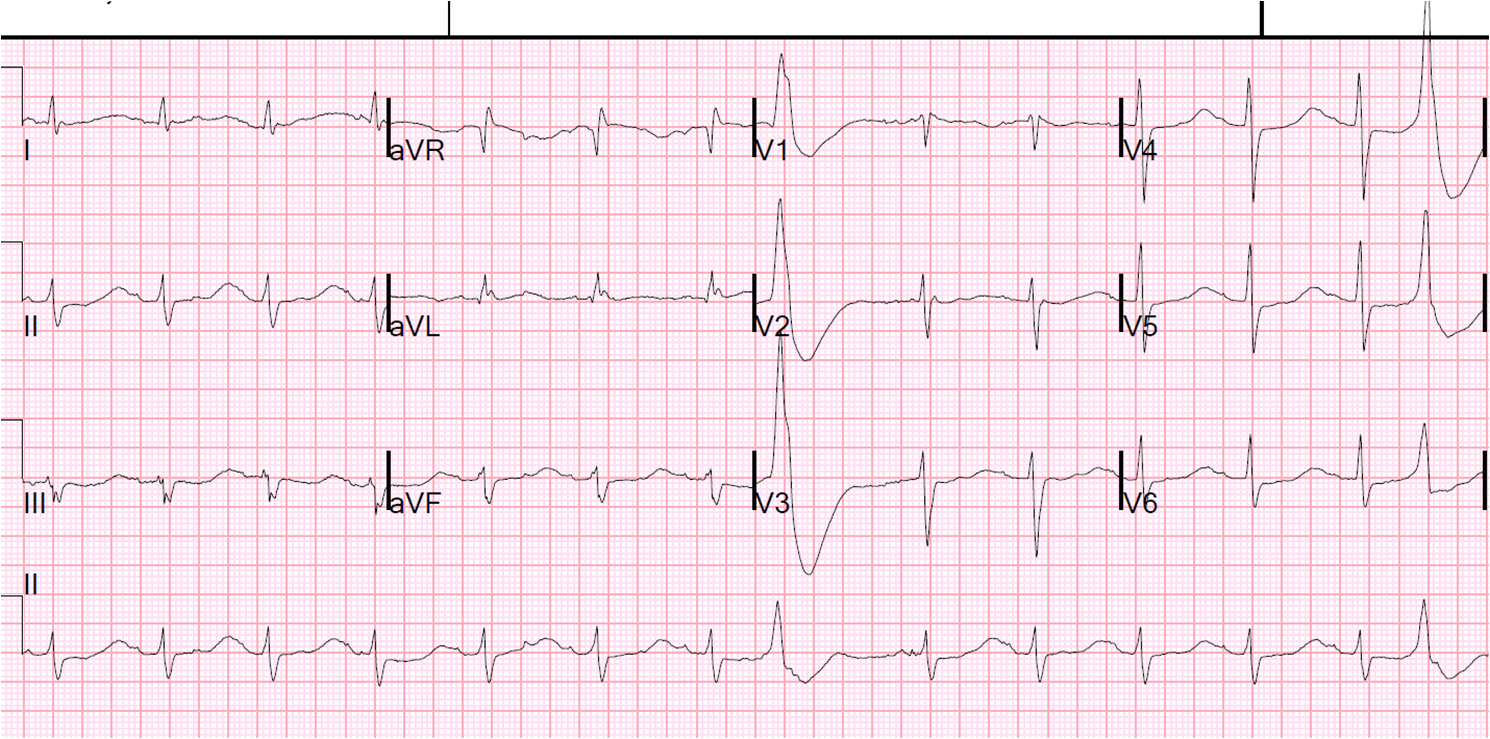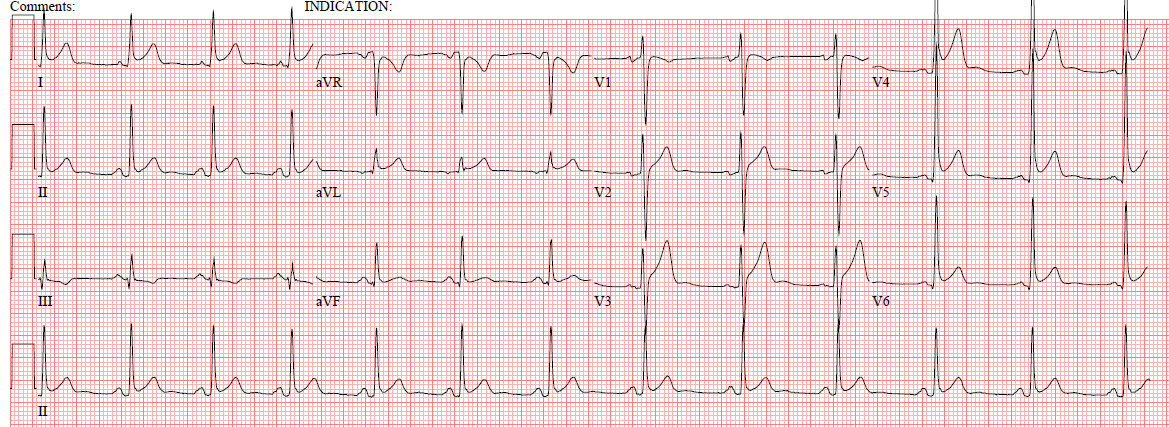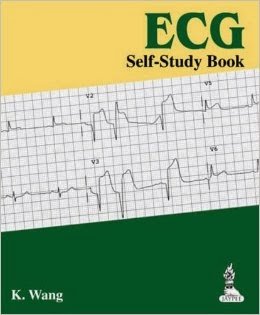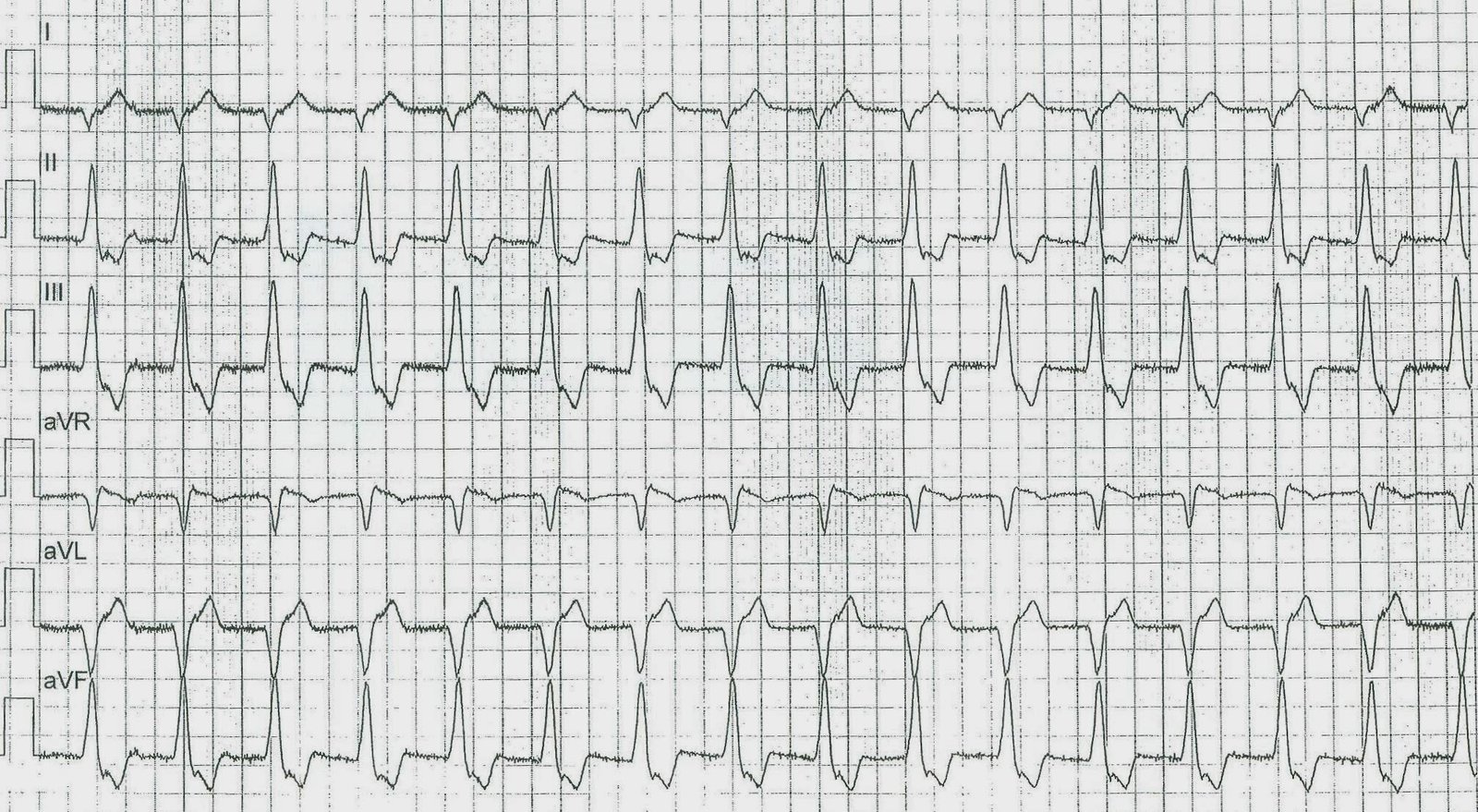A young woman presented by EMS for weakness.
Here is her ED ECG:
 |
| Diagnosis? See Below. |
Here is the prehospital ECG:
 |
| This is harder to interpret, except that there are multiple bizarre PVCs demonstrating the cardiac irritability. |
U-waves like this are almost always a result of hypokalemia. They may also be due to drugs that block potassium channels, which simulates hypokalemia.
The patient’s weakness is due to a K of 1.5 mEq/L. This is very dangerous and can lead to ventricular fibrillation, as in this case. It is a true Medical Emergency.
Here are more ECGs of hypokalemia.
The patient’s K was replenished, and this was the ECG 4 hours later with a K of 4.5 mEq/L:






Dr. Smith, do you know if this pt may have had gitelman's syndrome? If not do you know what the cause was?
Probable periodic paralysis.
at what rythm have you replenished the K ? 2 grammes per hour in 500 cc ? had you utilize Mg 2grammes in direct iv ?
One must be very careful here because, as it turned out, she had periodic paralysis and one can easily make the patient hyperkalemic because the K is sequestered in the cells and when it shifts out, it will normalize the K, and Rx with K may lead to hyperK. So give 10-20 mEq over one hour IV, 40 mEq po, and monitor very closely. This is hazardous!
If you find an etiology that is not periodic paralysis (vomiting, NG suction, for instance), then you can give more. In a critical situation, it may be given faster:
If cardiac arrest imminent or present:
Initial infusion:
10 mEq IV may be given over 5 to 10 min
remember: 10 mEq in 3 liters plasma given quickly raises K in a 70 kg person by 3.3mEq/L!